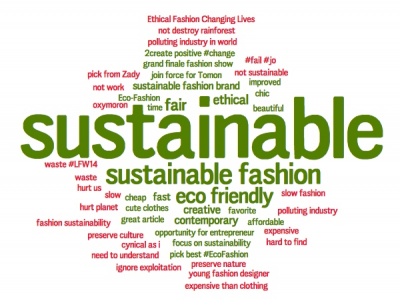
Sustainability is becoming more and more of a topic as time goes on. People usually overlook how to be sustainable when it comes to a wardrobe. There are tips on how to take this concept into one's closet.
Start with washing your clothes. Purchase green, Eco-friendly laundry detergent. Regular detergent contains numerous amounts of chemicals that harm the environment. Use low heat and line dry to conserve energy. An alternative to this is to find an organic cleaner who can take your clothes from dirty to clean with no harm toward the environment.
Reinvent old styles or clothes. It is neither necessary nor sustainable to wear the latest fashionable clothing out there. Find ways to bring your old clothing to life. In addition, use biodegradable bags when you do go shopping. Buying local also helps. This does not only support small businesses but by doing this businesses can buy local and thus cut down on transportation pollution.
"According to the Center for Environmental Health, fast fashion retailers like Charlotte Russe, Wet Seal and Forever 21 are still selling lead-contaminated shoes, belts and purses above the legal amount, even years after signing a settlement agreeing to limit the use of heavy metals in their products" (Denardo, 2015). Fast fashion is one of the main factors that leads the industry to be unsustainable. The cheap clothing is attractive and it is exciting to be able to keep up with the trends with little budget. At the end of the day, these clothes do not last long. A couple washes and they rip or lose their form. In addition, many of these fast fashion companies do not have ethical labor standards. Their workers are underpaid and have to work in harsh, dangerous conditions.

Green Living can help you learn what materials or fabrics are most sustainable. This will help you when you are shopping. Look at the tag and see if they contain bamboo, silk, organic cotton, soy, hemp or lyocell. These are examples of natural fabrics. Be careful though because some of these such as cotton can be produced in unsustainable conditions. Be sure to do your homework and know what kind of material the clothes you are interested are made of.
These are just a few helpful tips on how to bring sustainability into your closet and make a difference. One purchase at a time can lead to one sustainable day after another.

No comments:
Post a Comment